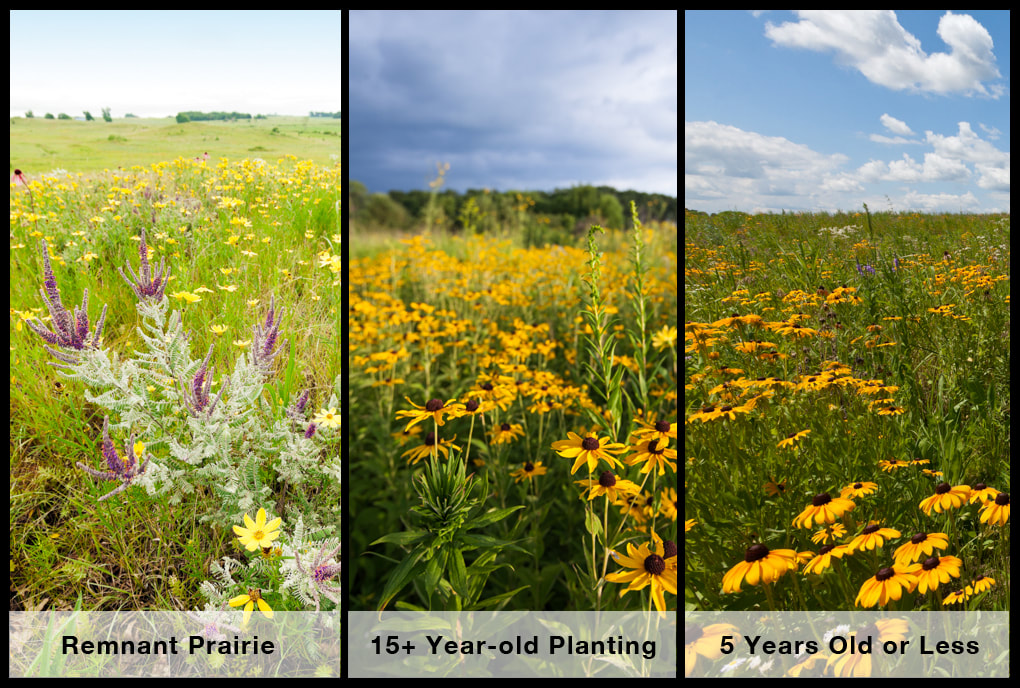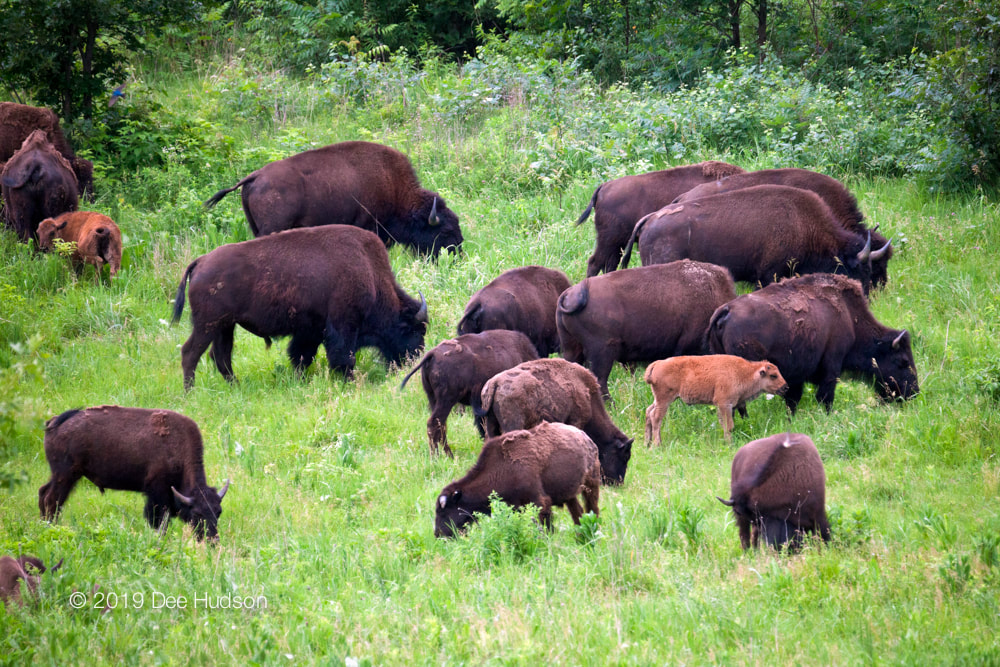|
By Jason Willand, PhD I first visited Nachusa Grasslands in August 2008 while I was working for the Illinois Natural History Survey. I was overwhelmed by the sheer scale of the restorations that comprised the preserve and never envisioned myself conducting research on these restored prairies. As fate would have it, I returned to school in 2009 to start work on my doctorate degree and was able to fit part of my research into the restorations at Nachusa. The research was for the first chapter of my dissertation, where I examined the role of seed and bud banks for plant community regeneration during prairie restoration. The field portion of this work lasted only five days, and afterwards I was hoping that I would have a chance to return to conduct more research. As fate would have it again, I was able to conduct a small research project at Nachusa as I was wrapping up my dissertation in July 2014. The research project was the result of brainstorming between my dissertation advisor Sara Baer and myself. With the imminent introduction of bison on the preserve in October 2014, we wanted to develop a potential long-term monitoring project. We decided that an interesting study would be to examine the resource availability of the remnant and restored prairies before the bison were introduced. Bison were the dominant grazers in the tallgrass prairie ecosystem before settlement by the pioneers. They play a “keystone” role in the maintenance and diversity of prairies because of their wallowing behavior and preferential grazing on graminoids (grasses and sedges). Most bison research to date has been conducted either on private game ranches or remnant prairies, with little research coming from restored prairies. We collected data on three resources that could affect where bison would graze in the introduction area: plant biomass, the forage quality of the biomass, and soil carbon and nitrogen. Knowledge of plant biomass provides a rough estimate of the amount of plant matter available for bison consumption. Forage quality of plant biomass is informative because it not only tells us how much of the plant matter is actually digestible to the bison, but also the fat and crude protein content of the plant matter. Soil carbon and nitrogen are vital because as a plant uptakes them, they allow a plant to produce important macromolecules for growth, such as proteins. In order to adequately sample the bison introduction area we surveyed three different prairie types: remnant prairies, restored prairies more than 15 years old and restored prairies less than 5 years old. To quantify potential differences in resource availability between the three prairie types we collected plant biomass and soil samples from three different “fields” in each prairie type. Both the plant biomass and soil samples were returned to the laboratory at Southern Illinois University, where they were processed. Forage quality samples were sent to the University of Wisconsin Madison Soil and Forage Laboratory for analysis of seven components of forage quality. We found that the restored prairies less than 5 years old had almost twice the amount of plant biomass compared to the restored prairies more than 15 years old and more than twice that of the remnant prairies. Surprisingly, there was little difference in forage quality and stored carbon and nitrogen in soil among the three prairie types. The similarity in forage quality between the three prairie types may be attributed to prescribed burning, as all the fields were burned in April 2014 three months before we sampled them. Prescribed burning has been found to increase forage quality for up to a year after a fire and may have created homogenous plant biomass on the landscape. We expected soil carbon and nitrogen to be higher in the remnant prairies because these soils have not been tilled, a disturbance that has been found to reduce the storage of carbon and nitrogen in agricultural soils. The remnant prairies we sampled perhaps had a lower storage of carbon and nitrogen than expected because the soil was fairly shallow in comparison to the typical deep, loamy soils that characterize many remnant prairies. The findings of this study suggest that bison may prefer the youngest restored prairies because there is simply more plant biomass available and little difference in the forage quality from the other prairie types. Even with these preliminary data it is still difficult to predict where bison will graze. Other factors that need to be considered are the dietary preferences of male and female bison and how prescribed burning creates a more heterogeneous landscape in the three prairie types. Post-introduction data have not been collected, so at this point any predictions of landscape use by bison is speculative at best. Maybe fate will strike again and I will be able to collect more data at Nachusa sometime in the near future. Jason Willand is an associate professor of biology at Missouri Southern State University in Joplin, MO where he currently serves as the assistant department chair and chair of the conservation section of the Missouri Academy of Sciences.
4 Comments
|
Blog CoordinatorDee Hudson
I am a nature photographer, a freelance graphic designer, and steward at Nachusa's Thelma Carpenter Prairie. I have taken photos for Nachusa since 2012. EditorJames Higby
I have been a high school French teacher, registered piano technician, and librarian. In retirement I am a volunteer historian at Lee County Historical and Genealogical Society. Categories
All
Archives
January 2024
|
CONNECT WITH US |
|






 RSS Feed
RSS Feed